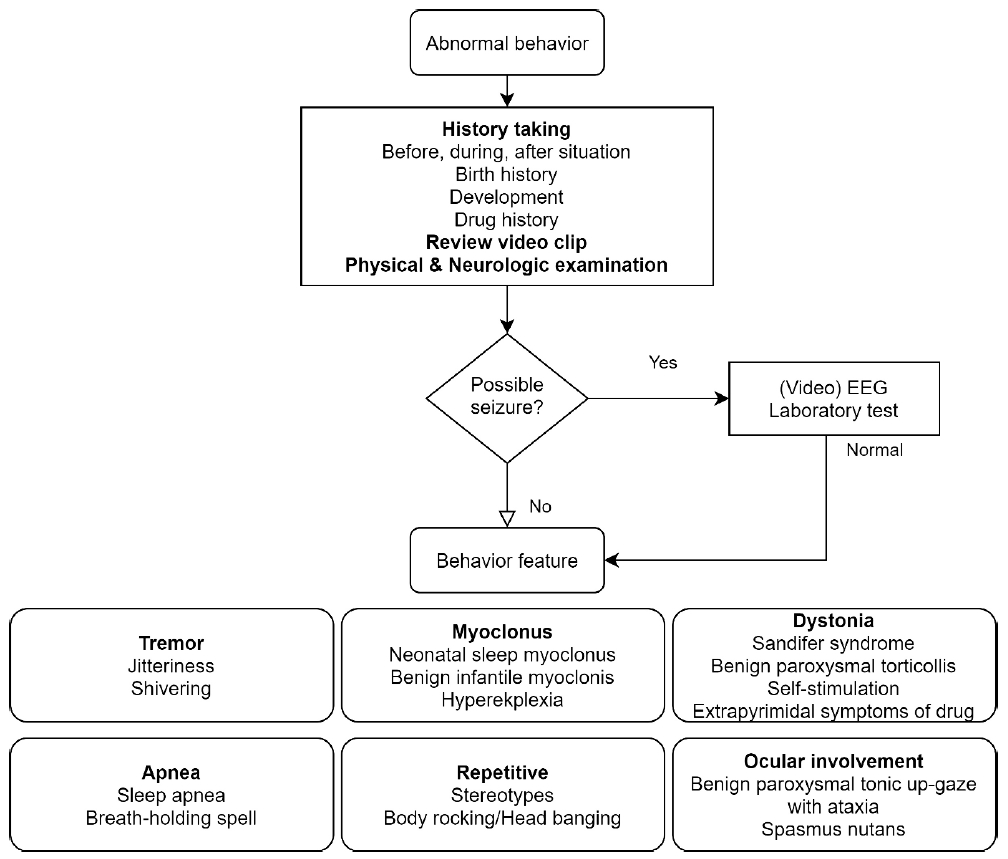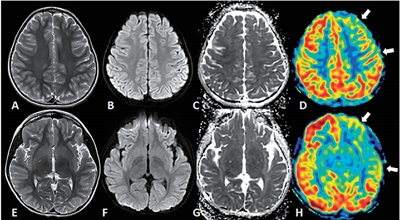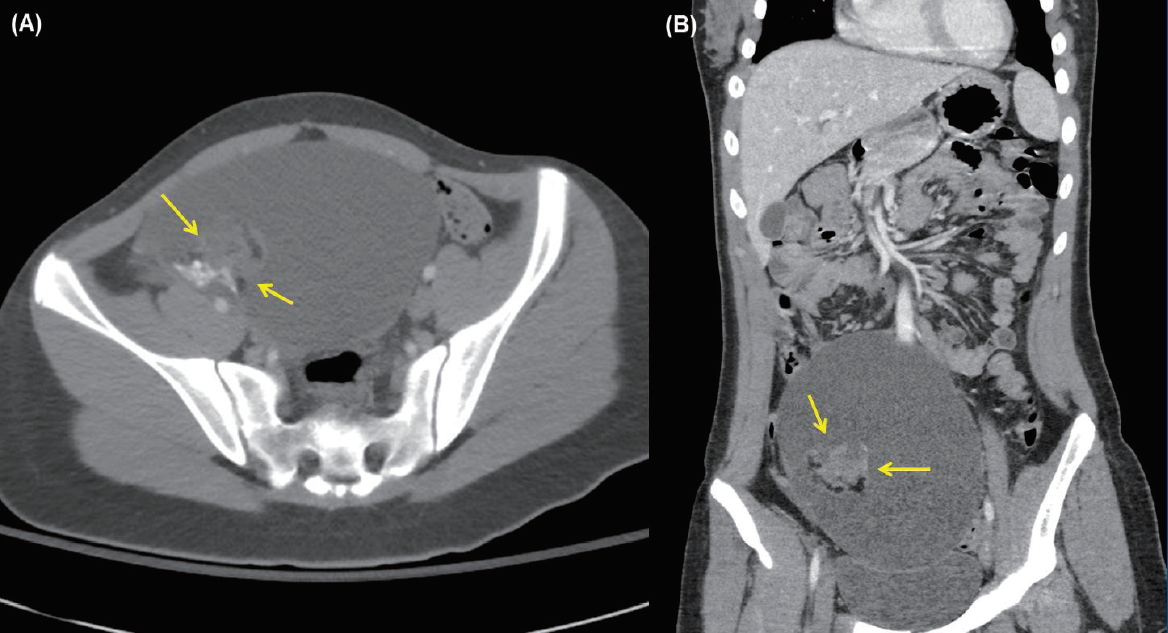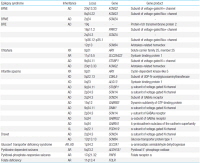Search
- Page Path
-
- HOME
- Search
- Review Article
- Neonatology (Perinatology)
- Neonatal seizures: stepping outside the comfort zone
- Menna Hashish, Mohamed Reda Bassiouny
- Clin Exp Pediatr. 2022;65(11):521-528. Published online April 4, 2022
-

· Use conventional and amplitude-integrated electroencephalography to confirm clinical seizures and screen high-risk newborns.
· Select an explicit clear elective event to be treated with less toxic and more effective antiepileptics.
- Neurology
- Big data analysis and artificial intelligence in epilepsy – common data model analysis and machine learning-based seizure detection and forecasting
- Yoon Gi Chung, Yonghoon Jeon, Sooyoung Yoo, Hunmin Kim, Hee Hwang
- Clin Exp Pediatr. 2022;65(6):272-282. Published online November 26, 2021
-

· Big data analysis, such as common data model and artificial intelligence, can solve relevant questions and improve clinical care.
· Recent deep learning studies achieved 0.887–0.996 areas under the receiver operating characteristic curve for automated interictal epileptiform discharge detection.
· Recent deep learning studies achieved 62.3%–99.0% accuracy for interictal-ictal classification in seizure detection and 75.0%– 87.8% sensitivity with a 0.06–0.21/hr false positive rate in seizure forecasting.
- Is it really a seizure? The challenge of paroxysmal nonepileptic events in young infants
- Seung Yeon Jung, Joon Won Kang
- Clin Exp Pediatr. 2021;64(8):384-392. Published online September 18, 2020
-

Paroxysmal nonepileptic events (PNE) comprise of a variety of nonepileptic behaviors and are divided into various types. A more accurate diagnosis is possible by examining the video clip provided by the caregiver. In infants, physiologic PNE accounts for the majority of the PNE. It is important to exclude epilepsy, for which blood tests, electroencephalography, and imaging tests can facilitate differential...
- Advanced neuroimaging techniques for evaluating pediatric epilepsy
- Yun Jeong Lee
- Clin Exp Pediatr. 2020;63(3):88-95. Published online February 6, 2020
-

Accurate localization of the seizure onset zone is important for better seizure outcomes and preventing deficits following epilepsy surgery. Recent advances in neuroimaging techniques have increased our understanding of the underlying etiology and improved our ability to noninvasively identify the seizure onset zone. Using epilepsy-specific magnetic resonance imaging (MRI) protocols, structural MRI allows better detection of the seizure onset zone,...
- Factors associated with seizure and cognitive outcomes after epilepsy surgery for low-grade epilepsy-associated neuroepithelial tumors in children
- Ara Ko, Joon Soo Lee
- Clin Exp Pediatr. 2020;63(5):171-177. Published online November 13, 2019
-

Low-grade epilepsy-associated neuroepithelial tumors (LEATs) are responsible for drug-resistant chronic focal epilepsy, and are the second-most common reason for epilepsy surgery in children. LEATs are extremely responsive to surgical treatment, and therefore epilepsy surgery should be considered as a treatment option for LEATs. However, the optimal time for surgery remains controversial, and surgeries are often delayed. In this review, we...
- Autoimmune encephalitis and epilepsy: evolving definition and clinical spectrum
- Joo Hee Seo, Yun-Jin Lee, Ki Hyeong Lee, Elakkat Gireesh, Holly Skinner, Michael Westerveld
- Clin Exp Pediatr. 2020;63(8):291-300. Published online August 16, 2019
-

Advances in autoimmune encephalitis studies in the past 10 years have led to the identification of new syndromes and biomarkers that have transformed the diagnostic approach to the disorder. The disorder or syndrome has been linked to a wide variety of pathologic processes associated with the neuron-specific autoantibodies targeting intracellular and plasma membrane antigens. However, current criteria for autoimmune encephalitis...
- Epilepsy syndromes during the first year of life and the usefulness of an epilepsy gene panel
- Eun Hye Lee
- Clin Exp Pediatr. 2018;61(4):101-107. Published online April 23, 2018
-

Recent advances in genetics have determined that a number of epilepsy syndromes that occur in the first year of life are associated with genetic etiologies. These syndromes range from benign familial epilepsy syndromes to early-onset epileptic encephalopathies that lead to poor prognoses and severe psychomotor retardation. An early genetic diagnosis can save time and overall cost by reducing the amount...
- Malformations of cortical development: genetic mechanisms and diagnostic approach
- Jeehun Lee
- Clin Exp Pediatr. 2017;60(1):1-9. Published online January 31, 2017
-
Malformations of cortical development are rare congenital anomalies of the cerebral cortex, wherein patients present with intractable epilepsy and various degrees of developmental delay. Cases show a spectrum of anomalous cortical formations with diverse anatomic and morphological abnormalities, a variety of genetic causes, and different clinical presentations. Brain magnetic resonance imaging has been of great help in determining the exact...
- Case Report
- Neurology
- Paroxysmal kinesigenic dyskinesia in a patient with a
PRRT2 mutation and centrotemporal spike discharges on electroencephalogram: case report of a 10-year-old girl - Sun Young Seo, Su Jeong You
- Clin Exp Pediatr. 2016;59(Suppl 1):S157-S160. Published online November 30, 2016
-
Coexistence of paroxysmal kinesigenic dyskinesia (PKD) with benign infantile convulsion (BIC) and centrotemporal spikes (CTS) is very rare. A 10-year-old girl presented with a 3-year history of frequent attacks of staggering while laughing and of suddenly collapsing while walking. Interictal electroencephalogram (EEG) revealed bilateral CTS, but no changes in EEG were observed during movement. The patient's medical history showed afebrile...
- A rare case of dysembryoplastic neuroepithelial tumor combined with encephalocraniocutaneous lipomatosis and intractable seizures
- Jee-Yeon Han, Mi-Sun Yum, Eun-Hee Kim, Seokho Hong, Tae-Sung Ko
- Clin Exp Pediatr. 2016;59(Suppl 1):S139-S144. Published online November 30, 2016
-
Encephalocraniocutaneous lipomatosis (ECCL) is a rare neurocutaneous syndrome that affects ectomesodermal tissues (skin, eyes, adipose tissue, and brain). The neurologic manifestations associated with ECCL are various including seizures. However, ECCL patients very rarely develop brain tumors that originate from the neuroepithelium. This is the first described case of ECCL in combination with dysembryoplastic neuroepithelial tumor (DNET) that presented with intractable...
- Original Article
- Neurology
- Prognostic factors of neurological outcomes in late-preterm and term infants with perinatal asphyxia
- Sun Young Seo, Gyu Hong Shim, Myoung Jae Chey, Su Jeong You
- Clin Exp Pediatr. 2016;59(11):440-445. Published online November 18, 2016
-
Purpose This study aimed to identify prognostic factors of neurological outcomes, including developmental delay, cerebral palsy and epilepsy in late-preterm and term infants with perinatal asphyxia.
Methods All late-preterm and term infants with perinatal asphyxia or hypoxic-ischemic insults who admitted the neonatal intensive care unit of Inje University Sanggye Paik Hospital between 2006 and 2014 and were followed up for at least 2...
- Venous angioma may be associated with epilepsy in children
- Bo Ryung Kim, Yun Jin Lee, Sang Ook Nam, Kyung Hee Park
- Clin Exp Pediatr. 2016;59(8):341-345. Published online August 24, 2016
-
Purpose Venous angioma (VA) is the most common congenital abnormality of the intracranial vasculature. This study aimed to investigate the relationship between VA and epilepsy and to identify the characteristics of children with VA and epilepsy.
Methods The records of all patients aged less than 18 years who underwent brain magnetic resonance imaging (MRI) at Pusan National University Hospital were retrospectively reviewed. Patients...
- Review Article
- Neurology
- Cognitive impairment in childhood onset epilepsy: up-to-date information about its causes
- Eun-Hee Kim, Tae-Sung Ko
- Clin Exp Pediatr. 2016;59(4):155-164. Published online April 30, 2016
-
Cognitive impairment associated with childhood-onset epilepsy is an important consequence in the developing brain owing to its negative effects on neurodevelopmental and social outcomes. While the cause of cognitive impairment in epilepsy appears to be multifactorial, epilepsy-related factors such as type of epilepsy and underlying etiology, age at onset, frequency of seizures, duration of epilepsy, and its treatment are considered...
- Original Article
- Neurology
- Epilepsy in children with a history of febrile seizures
- Sang Hyun Lee, Jung Hye Byeon, Gun Ha Kim, Baik-Lin Eun, So-Hee Eun
- Clin Exp Pediatr. 2016;59(2):74-79. Published online February 29, 2016
-
Purpose Febrile seizure, the most common type of pediatric convulsive disorder, is a benign seizure syndrome distinct from epilepsy. However, as epilepsy is also common during childhood, we aimed to identify the prognostic factors that can predict epilepsy in children with febrile seizures
Methods The study comprised 249 children at the Korea University Ansan Hospital who presented with febrile seizures. The relationship between...
- Review Article
- Febrile seizures
- Sajun Chung
- Clin Exp Pediatr. 2014;57(9):384-395. Published online September 30, 2014
-
Febrile seizure (FS) is the most common seizure disorder of childhood, and occurs in an age-related manner. FS are classified into simple and complex. FS has a multifactorial inheritance, suggesting that both genetic and environmental factors are causative. Various animal models have elucidated the pathophysiological mechanisms of FS. Risk factors for a first FS are a family history of the...
- Magnetoencephalography in pediatric epilepsy
- Hunmin Kim, Chun Kee Chung, Hee Hwang
- Clin Exp Pediatr. 2013;56(10):431-438. Published online October 31, 2013
-
Magnetoencephalography (MEG) records the magnetic field generated by electrical activity of cortical neurons. The signal is not distorted or attenuated, and it is contactless recording that can be performed comfortably even for longer than an hour. It has excellent and decent temporal resolution, especially when it is combined with the patient's own brain magnetic resonance imaging (magnetic source imaging). Data...
- Lower fat and better quality diet therapy for children with pharmacoresistant epilepsy
- Jung-Rim Yoon, Heung Dong Kim, Hoon-Chul Kang
- Clin Exp Pediatr. 2013;56(8):327-331. Published online August 27, 2013
-
The ketogenic diet (KD) is an established, effective, nonpharmacologic treatment for children with pharmacoresistant epilepsy. Although the KD is the most well-established dietary therapy for epilepsy, it is too restrictive and is associated with serious complications; therefore, alternative lower-fat diets, including a modified Atkins diet and low-glycemic index diet, have been developed. Recent ongoing clinical evidence suggests that other dietary...
- Temporal lobe epilepsy surgery in children versus adults: from etiologies to outcomes
- Yun-Jin Lee, Joon Soo Lee
- Clin Exp Pediatr. 2013;56(7):275-281. Published online July 19, 2013
-
Temporal lobe epilepsy (TLE) is the most common type of medically intractable epilepsy in adults and children, and mesial temporal sclerosis is the most common underlying cause of TLE. Unlike in the case of adults, TLE in infants and young children often has etiologies other than mesial temporal sclerosis, such as tumors, cortical dysplasia, trauma, and vascular malformations. Differences in...
- Original Article
- Cognitive and other neuropsychological profiles in children with newly diagnosed benign rolandic epilepsy
- Soonhak Kwon, Hye-Eun Seo, Su Kyeong Hwang
- Clin Exp Pediatr. 2012;55(10):383-387. Published online October 29, 2012
-
Purpose Although benign rolandic epilepsy (BRE) is a benign condition, it may be associated with a spectrum of behavioral, psychiatric, and cognitive disorders. This study aimed to assess the cognitive and other neuropsychological profiles of children with BRE.
Methods In total, 23 children with BRE were consecutively recruited. All children underwent sleep electroencephalography (EEG) and were assessed on a battery of comprehensive neuropsychological...
- Review Article
- The use of ketogenic diet in special situations: expanding use in intractable epilepsy and other neurologic disorders
- Munhyang Lee
- Clin Exp Pediatr. 2012;55(9):316-321. Published online September 14, 2012
-
The ketogenic diet has been widely used and proved to be effective for intractable epilepsy. Although the mechanisms underlying its anti-epileptic effects remain to be proven, there are increasing experimental evidences for its neuroprotective effects along with many researches about expanding use of the diet in other neurologic disorders. The first success was reported in glucose transporter type 1 deficiency...
- Original Article
- Epilepsy in Korean patients with Angelman syndrome
- Sung-Hee Park, Jung-Rim Yoon, Heung Dong Kim, Joon Soo Lee, Young-Mock Lee, Hoon-Chul Kang
- Clin Exp Pediatr. 2012;55(5):171-176. Published online May 21, 2012
-
Purpose The aim of this study was to investigate the natural history of epilepsy and response to anti-epileptic drug treatment in patients with Angelman syndrome (AS) in Korea.
Methods We retrospectively reviewed the clinical records of 14 patients diagnosed with epilepsy out of a total of 17 patients with a genetic diagnosis of AS. These patients were seen at the Department of Pediatric...
- Review Article
- Cognitive function of idiopathic childhood epilepsy
- Su Jeong You
- Clin Exp Pediatr. 2012;55(5):159-163. Published online May 21, 2012
-
Most children with epilepsy are of normal intelligence. However, a significant subset will have temporary or permanent cognitive impairment. Factors that affect cognitive function are myriad and include the underlying neuropathology of the epilepsy, seizures, epileptiform discharges, psychosocial problems, age at seizure onset, duration of epilepsy, and side effects associated with antiepileptic drugs. This review article discusses cognitive function in...
- Case Report
- Signal change in hippocampus and current source of spikes in Panayiotopoulos syndrome
- Jung Sook Yeom, Youngsoo Kim, Ji Sook Park, Ji Hyun Seo, Eun Sil Park, Jae Young Lim, Chan-Hoo Park, Hyang Ok Woo, Hee-Shang Youn, Oh-Young Kwon
- Clin Exp Pediatr. 2012;55(2):63-67. Published online February 14, 2012
-
A 4-year-old girl with Panayiotopoulos syndrome presented with a history of 4 prolonged autonomic seizures. The clinical features of her seizures included, in order of occurrence, blank staring, pallor, vomiting, hemi-clonic movement on the right side, and unresponsiveness. A brain magnetic resonance imaging (MRI) showed a slightly high T2 signal in the left hippocampus. Interictal electoencephalogram revealed spikes in the...
- Original Article
- Characteristics of late-onset epilepsy and EEG findings in children with autism spectrum disorders
- Haneul Lee, Hoon Chul Kang, Seung Woo Kim, Young Key Kim, Hee Jung Chung
- Clin Exp Pediatr. 2011;54(1):22-28. Published online January 31, 2011
-
Purpose To investigate the clinical characteristics of late-onset epilepsy combined with autism spectrum disorder (ASD), and the relationship between certain types of electroencephalography (EEG) abnormalities in ASD and associated neuropsychological problems.
Methods Thirty patients diagnosed with ASD in early childhood and later developed clinical seizures were reviewed retrospectively. First, the clinical characteristics, language and behavioral regression, and EEG findings of these late-onset epilepsy...
- Review Article
- Multimodal neuroimaging in presurgical evaluation of childhood epilepsy
- Da Eun Jung, Joon-Soo Lee
- Clin Exp Pediatr. 2010;53(8):779-785. Published online August 31, 2010
-
In pre-surgical evaluation of pediatric epilepsy, the combined use of multiple imaging modalities for precise localization of the epileptogenic focus is a worthwhile endeavor. Advanced neuroimaging by high field Magnetic resonance imaging (MRI), diffusion tensor images, and MR spectroscopy have the potential to identify subtle lesions. 18F-FDG positron emission tomography and single photon emission tomography provide visualization of metabolic alterations...
- Original Article
- Efficacy of levetiracetam in refractory childhood epilepsy
- Keon Su Lee, Joon Won Kang
- Clin Exp Pediatr. 2010;53(4):571-578. Published online April 15, 2010
-
Purpose : To evaluate the efficacy and safety of levetiracetam adjunctive therapy for reducing the rate of seizure frequency in children with intractable pediatric epilepsy. Methods : We reviewed the medical records of 86 patients with intractable pediatric epilepsy who visited our hospital between March 1989 and February 2009. Levetiracetam was included in the previous anticonvulsant regimen for at least 6... -
- Clinical efficacy and safety of lamotrigine monotherapy in newly diagnosed pediatric patients with epilepsy
- Ji Hye Han, Jung Eun Oh, Sun Jun Kim
- Clin Exp Pediatr. 2010;53(4):565-570. Published online April 15, 2010
-
Purpose : To verify the efficacy and safety of lamotrigine (LTG) monotherapy in newly diagnosed children with epilepsy. Methods : We prospectively enrolled 148 children who had undergone LTG monotherapy at our institution between September 2002 and June 2009. Twenty-nine patients were excluded: 19 due to incomplete data and 10 were lost to follow up. The data of the remaining... -
- Change of interictal epileptiform discharges after antiepiletic drug treatment in childhood epilepsy
- Mun Ju Kim, Sang Ook Nam
- Clin Exp Pediatr. 2010;53(4):560-564. Published online April 15, 2010
-
Purpose : Electroencephalography (EEG) findings can play a critical role in a variety of decisions, including initiation and withdrawal of antiepileptic drugs (AEDs) therapy. Interictal epileptiform discharges (IEDs) are predictor of recurrent seizures. We investigated IEDs in EEG after AED therapy and related factors in epileptic children. Methods : The subjects were 257 children [151 males and 106 females; age,... -
- Case Report
- A case of hippocampal sclerosis diagnosed as cortical dysplasia due to preoperative brain MRI finding
- Jun Seok Lee, Kyo Ryung Kim, Jeong Tae Kim, Min Jung Choi, Young Mock Lee, Heung Dong Kim, Joon Soo Lee, Dong Seok Kim, Tae Seong Kim
- Clin Exp Pediatr. 2010;53(1):106-110. Published online January 15, 2010
-
Hippocampal sclerosis (HS) is one of the most common features of intractable temporal lobe epilepsy. Generally it can be identified through brain magnetic resonance imaging (MRI) with high degree of sensitivity and specificity. Typical brain MRI findings of HS are hippocampal atrophy with hyperintense signal confined to the lesion. On the other hand cortical dysplasia exhibits blurring of the gray-white... -
- Original Article
- Mediating effect of perceived stigma against epilepsy on quality of life among parents with epileptic child
- Nho Eun Kim, Sung Min Cho, Dong Wook Kim
- Clin Exp Pediatr. 2009;52(9):1005-1014. Published online September 15, 2009
-
Purpose:Epilepsy of child may cause high level of psychosocial difficulties for parents including stigmatization and stress and therefore worsen their quality of life (QOL). The purpose of this study was to evaluate the mediating effect of perceived stigma against epilepsy on QOL among parents with epileptic child. Methods:Two hundred and sixty parents of epileptic child recruited from five separated university... -
-

-
-

-

-
Impact Factor4.2
-
6.52022CiteScore92nd percentilePowered by







